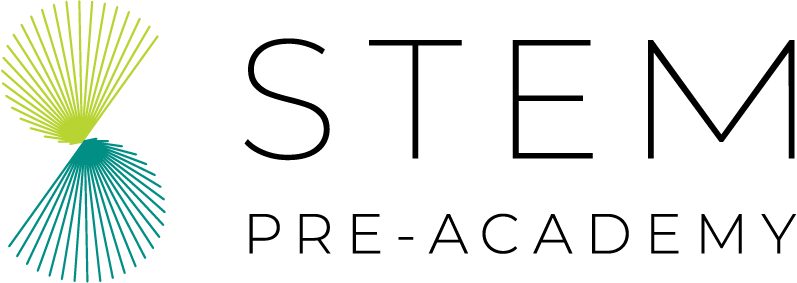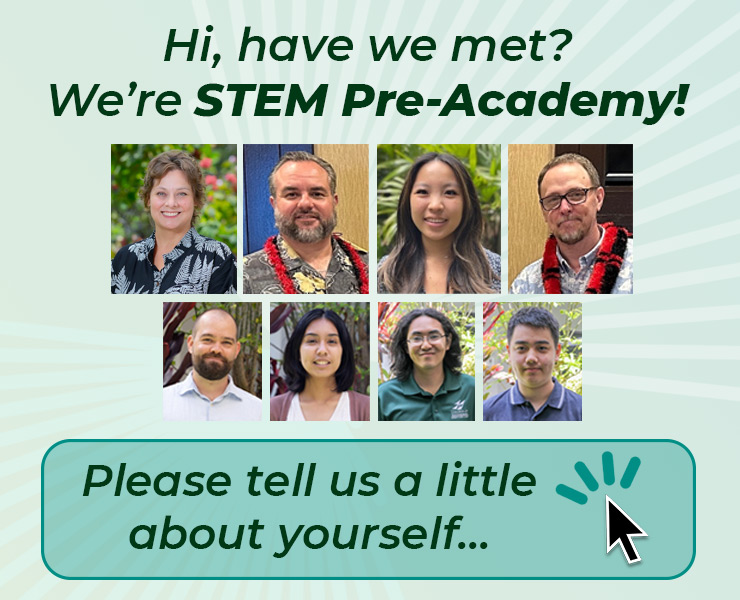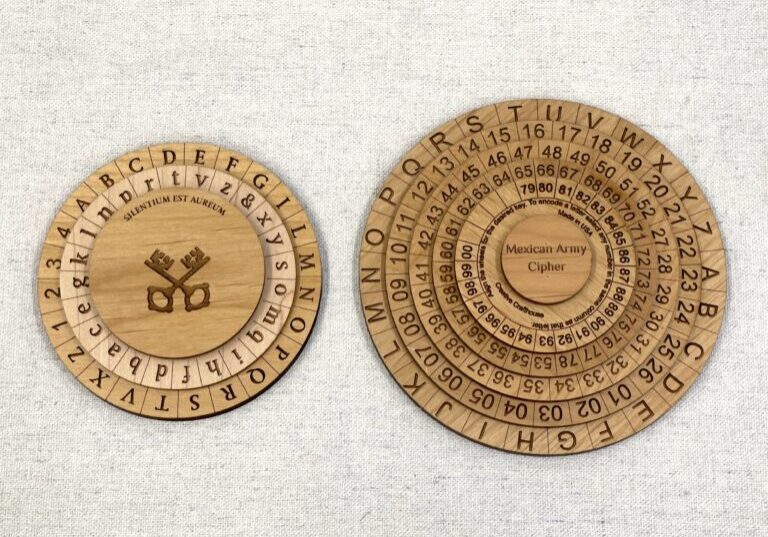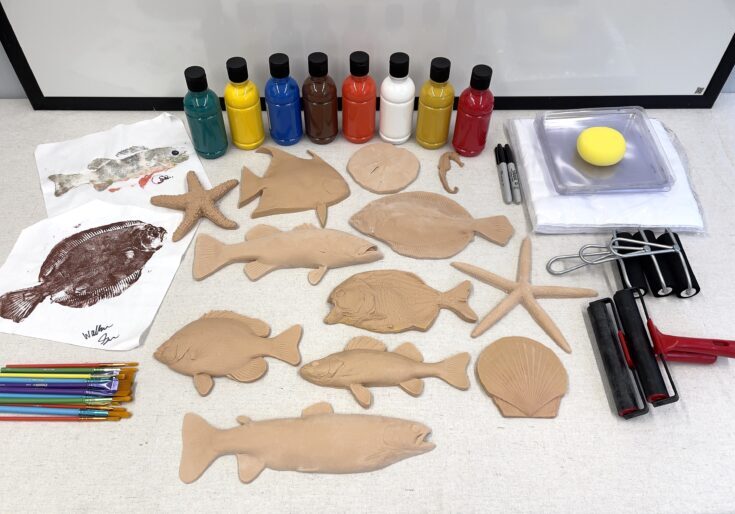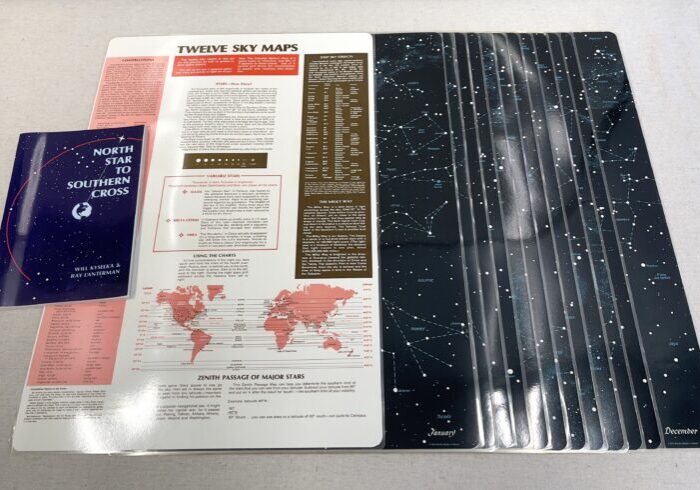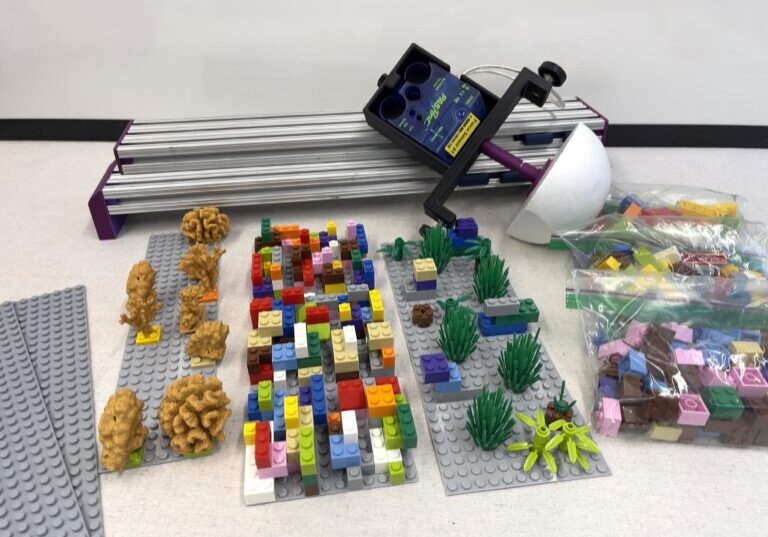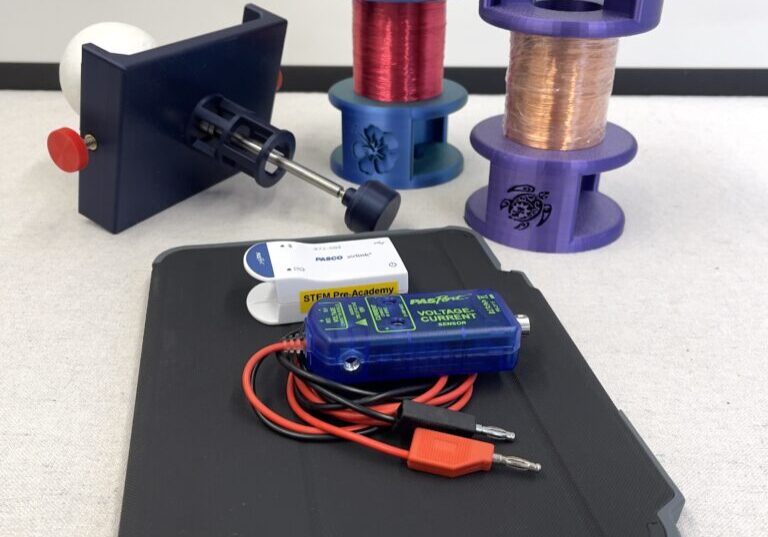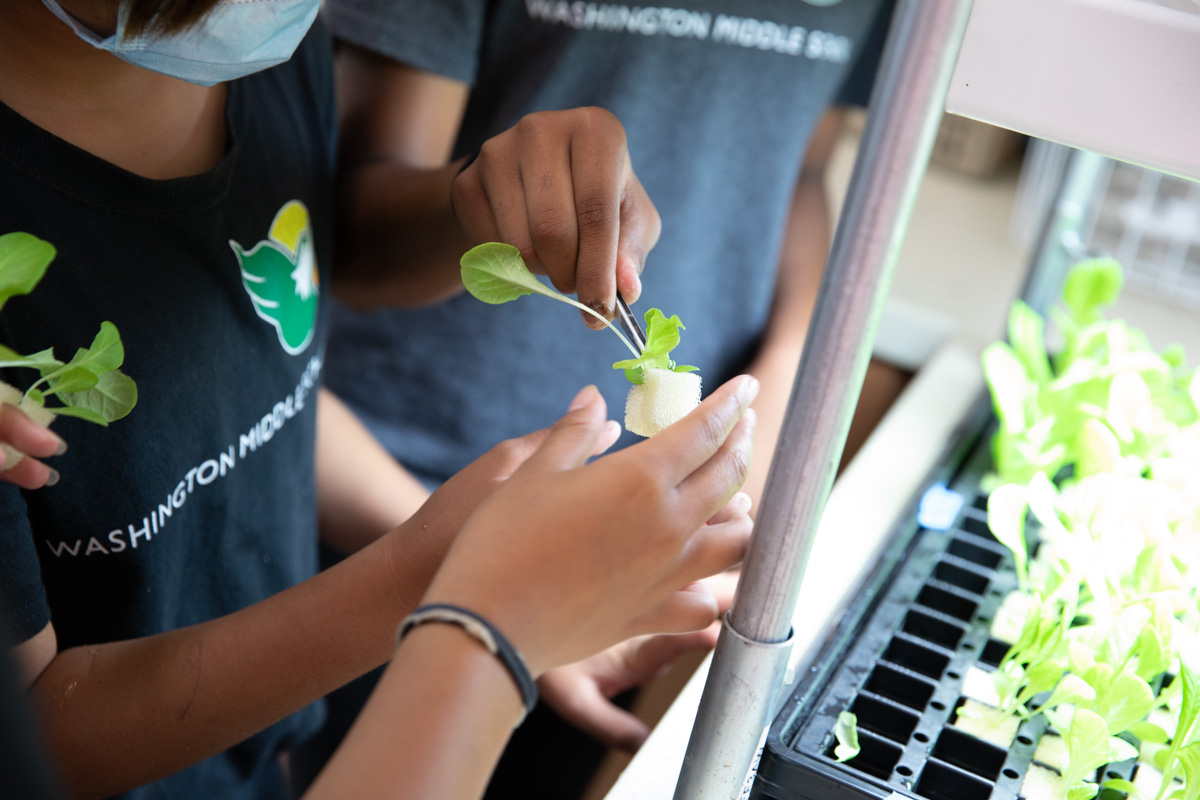
Our Vision
Hawai‘i’s community of K–12 students and teachers are inspired by the science, technology, engineering, and mathematics (STEM) research and innovation of the University of Hawai‘i System, igniting their STEM passions, growing their expertise, and envisioning their own futures in our islands.

Our Mission
STEM Pre-Academy fosters student interest, engagement, and learning in STEM by connecting University of Hawai‘i research and innovation with K–12 classrooms.
We offer tools and resources, access to expertise, and learning opportunities for teachers, specifically focusing on Hawai‘i public schools for grades 3–8.
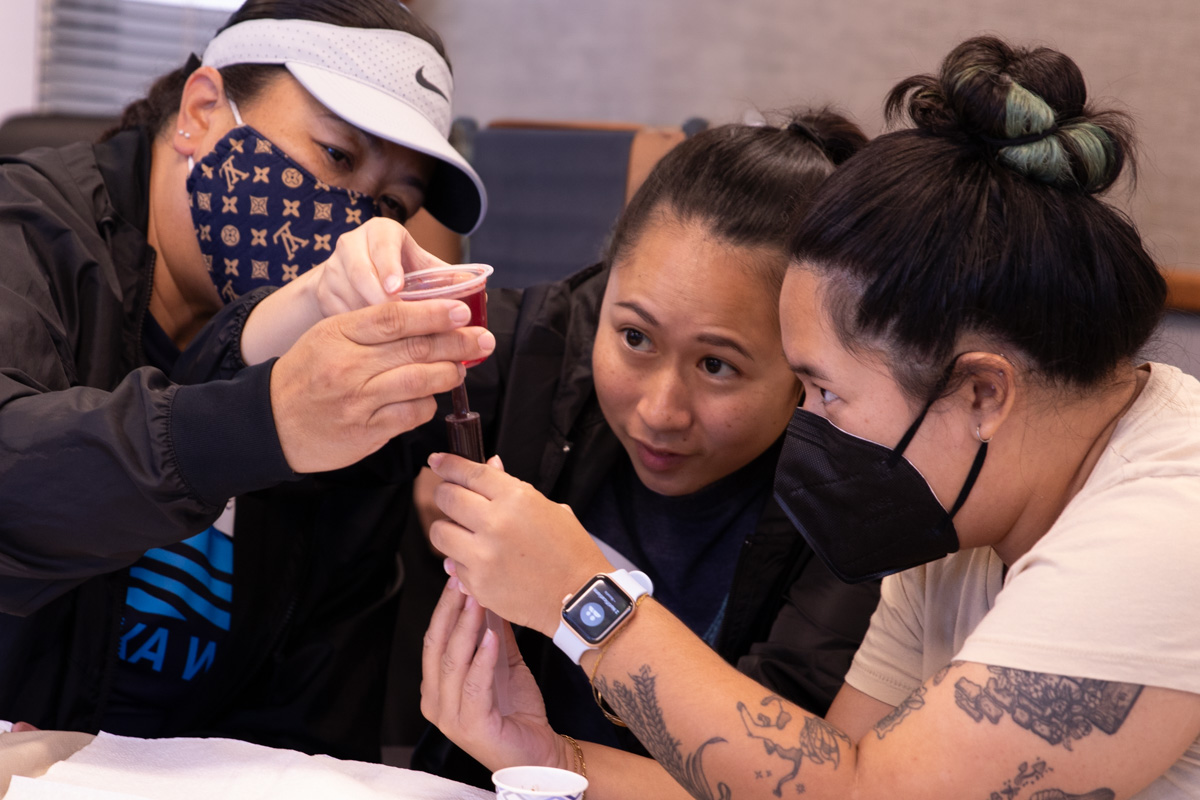
Our Organization
STEM Pre-Academy is administered by the Office of the Vice-President for Research and Innovation, UH System. OVPRI oversees and facilitates research activities, supports innovation, and disseminates research results. STEM Pre-Academy supports OVPRI’s mission, working across the UH System and serving teachers statewide.
Join Our Friendly Newsletter!
Get inspired by teachers and their students! Receive expert tips, teacher-generated content, technical information, news about upcoming opportunities, and resources delivered right to your inbox!
